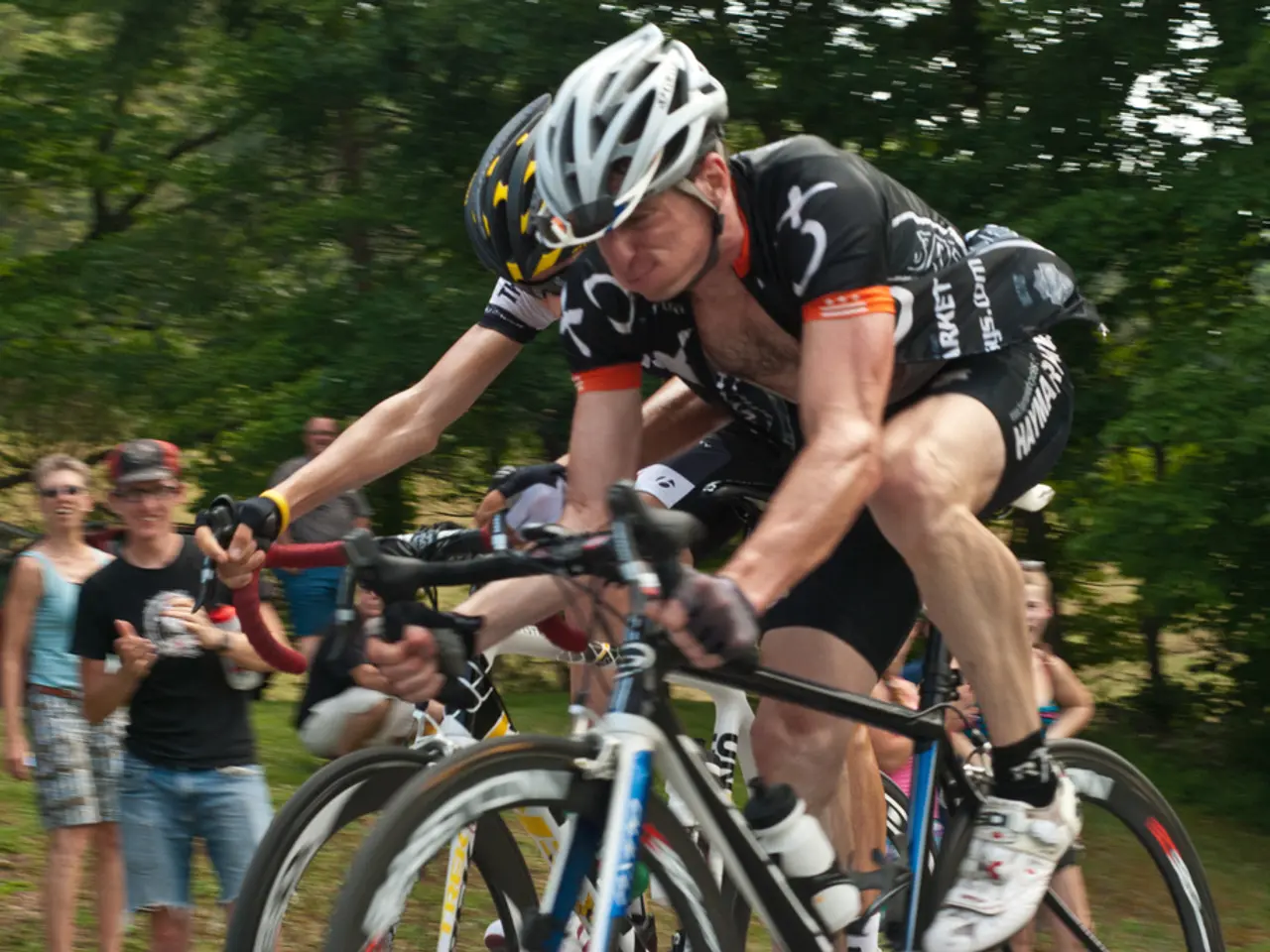Earning a livelihood as a domestic road racer in America: An exploration of the semi-professional racing scene within the American road racing community
In the world of cycling, the American road racing scene presents a fascinating narrative. The current phase is often described as a "bust," but there are signs of resilience and optimism that hint at a potential resurgence.
Hugo Scala Jr., a rider for Project Echelon, has been a notable figure in this landscape. He has ridden for the team since 2022 and claimed a stage win at last year's Volta a Portugal. Project Echelon, one of two U.S.-based men's UCI Continental teams, has seen a shift in focus abroad due to the shrinking domestic calendar.
The economic direction of the men's domestic peloton is pointing down, with rising operational costs being a significant factor. Race directors cite substantial increases in expenses such as staffing, logistics, public safety, and participant amenities. For instance, costs for medals, shirts, timing, and traffic control have risen substantially, putting financial strain on organizers.
Safety concerns also loom large. Big crashes and incidents pose a threat by discouraging participation and attracting negative publicity. The absence of serious safety incidents is critical to maintaining interest and trust, especially compared to the gravel racing scene which is viewed as having a supportive community and safer environment.
Gravel racing is currently surging in popularity in the U.S., potentially drawing riders and fan interest away from traditional road racing. Mountain biking and other cycling forms also compete for attention and participation.
Industry commentators propose potential solutions for a road racing resurgence. Innovative formats like that used at the Levi Fondo may attract new audiences by offering community-centered, less adversarial events that emphasize value beyond competition. Fostering respect for shared road use and positive local community impact can help secure permits and goodwill, essential for future events. Implementing stronger safety protocols and promoting a culture of care on the road can reduce the risk of high-profile crashes and negativity that deter riders and sponsors. Offering better amenities, engaging race experiences, and incorporating digital technologies for timing, tracking, and fan engagement can boost appeal.
Despite the challenges, the industry remains optimistic. Many organizers expect stable or increased revenues in 2025, reflecting innovation and resilience.
In the realm of women's road racing, the picture is more nuanced. Fewer than 20 women nationwide race exclusively in the U.S. and actually earn a living from it, most of them specializing in criteriums. Julie Kuliecza, a veteran of the domestic peloton, a team director for the Jakroo Composite Team, and a race promoter, notes that a secondary source of income is necessary for most riders in the U.S.
Legendary figures such as Greg LeMond and Lance Armstrong have graced the professional road racing scene in the United States. As the industry navigates its challenges and seeks solutions, the future of American road racing remains an exciting prospect.
References:
[1] Running USA 2025 Industry Insights Report on Race Production Costs [2] Fast Talk Labs discussion on Gravel vs Road Racing and Safety Challenges [3] Noah Granigan, a cyclist for the Golden State Blazers and a stalwart of the American road scene, now balances racing with an engineering job at SPIA Cycling. [4] The Tour of California and Colorado Classic are defunct professional road races in the United States. [5] The current "pro" circuit in the United States consists of three main spring stage races and iconic criteriums, along with national championships and regional races. [6] The creation of the Maryland Cycling Classic suggests a desire for a road racing resurgence, but a pair of new races isn't enough for a revolution. [7] Kuliecza notes that in the U.S., if a criterium team has an exceptional sprinter and a good group of riders, they can make a significant amount of money at the races. [8] Elite-level racing continues in the United States through scrappy stage races and long-standing criteriums. [9] Scala compares the state of American road racing to Major League Soccer, with the goal being to reach the Premier League. [10] Scala Jr. has ridden for Project Echelon since 2022 and won a stage at last year's Volta a Portugal. [11] The economic direction of the men's domestic peloton is pointing down, but the prospects for the domestic women's peloton are more nuanced. [12] Fewer than 20 women nationwide race exclusively in the U.S. and actually earn a living from it, most of them specializing in criteriums. [13] A secondary source of income is necessary for most riders in the U.S., according to Kuliecza. [14] Elite-level racing continues in the United States through scrappy stage races and long-standing criteriums. [15] The creation of the Maryland Cycling Classic suggests a desire for a road racing resurgence, but a pair of new races isn't enough for a revolution. [16] Levi's GranFondo is trying a new approach to marketing road racing devoid of UCI sanctions. [17] Riders with aspirations of racing in Europe tend to focus on the shorter, but more traditional, road and stage race calendar. [18] The current "bust phase" in American road racing is primarily driven by rising costs of race production, safety concerns, and competition from alternative cycling formats such as gravel racing. Potential solutions for a resurgence include innovating race models to enhance community value, improving safety to prevent big incidents, and adapting to evolving participant preferences.
Sports, such as road racing, form a significant part of the cycling landscape in the United States. Despite the current "bust" phase in American road racing, highlighted by rising costs and safety concerns, there are signs of resilience and optimism that hint at a potential resurgence for this sport.





